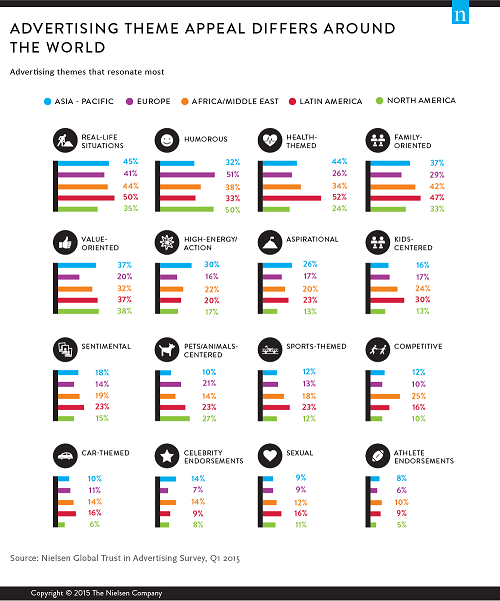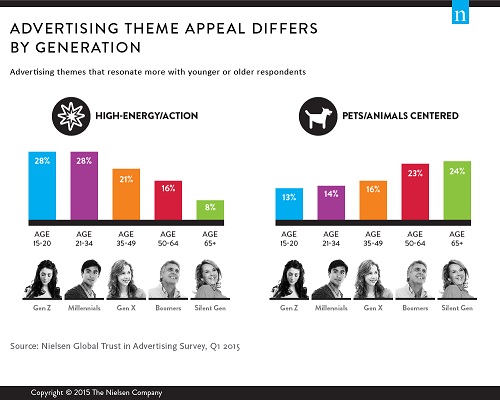
 Reaching your audience is an important component of any ad campaign, but what good is ad reach if it doesn’t resonate with the audience? A recent Nielsen global online survey discussed the trust levels across earned, owned and paid advertising formats, but effective campaigns require more than identifying the right channel for reaching consumers. It’s also about delivering the right message.
Reaching your audience is an important component of any ad campaign, but what good is ad reach if it doesn’t resonate with the audience? A recent Nielsen global online survey discussed the trust levels across earned, owned and paid advertising formats, but effective campaigns require more than identifying the right channel for reaching consumers. It’s also about delivering the right message.
Nielsen Consumer Neuroscience research shows that highly successful ads score well on three dimensions: attention, conversion to long-term memory and emotional engagement. So how can marketers ensure that their ads stand out on these factors? In Nielsen’s latest Global Trust in Advertising Survey, we asked 30,000 online consumers which advertising themes are most impactful. The findings shine light on the types of messages they most enjoy—and not surprisingly, they often differ by region and generation.
Ads depicting real-life situations resonate most powerfully, selected by 44% of global respondents. Consumer neuroscience research on learning and memory shows that employing familiar themes is extremely useful in driving memorability.
“Best-in-class ads share several characteristics: they’re relatable, follow an upbeat and simple storyline, use novel and striking imagery and make an emotional connection,” said Randall Beard, president, Nielsen Expanded Verticals. “These characteristics provide a strong foundation for creative development, but there’s no ‘one-size-fits all’ formula. What’s effective in one country or region won’t necessarily work well in others. A deep understanding of local preferences is vital.”
Indeed, there are notable regional differences in how messages resonate across the world. Humor resonates more strongly in Western markets. It tops the list of most appealing message types in Europe and North America, cited by 51% and 50% of respondents, respectively, yet doesn’t rate higher than third in any other region (respondents in Asia-Pacific and Latin America rate it fourth). Health-themed ads resonate strongly in Latin America—in fact, they top the list. Ads focusing on family also have strong appeal in Latin America as well as Africa/Middle East.

Trying to connect with consumers emotionally? Start by considering whom you’re trying to reach.
Some messages resonate well across every generation. Ads depicting real-life situations are a good example—they appeal to roughly four-in-10 respondents in every age group. Nielsen TV Brand Effect research in the U.S. has also shown that relatable characters are important to both older and younger consumers. And while humor resonates well across the generations, the preferred style of humor can differ dramatically. Older consumers prefer clever, light-hearted humor, while younger consumers prefer offbeat, sarcastic and slapstick humor. Health- and value-oriented ads are also rated highly by all five generations.
Other messages, however, have niche appeal. High-energy/action, aspirational themes and celebrity endorsements resonate more strongly with Generation Z (ages 15-20) and Millennial (ages 21-34) audiences. Meanwhile, pet-centered ads have greater appeal among older consumers.
“The importance of understanding your audience and catering to their tastes cannot be overestimated,” said Beard. “Regardless of the delivery format, the most successful ads are those that speak to the sentiment of the audience.”

Other findings from the recent Trust in Advertising report include:
Self-reported action in response to advertising exceeds trust by more than double digits for ads served in search engine results, ads on social networks and magazines.
More than eight-in-10 global respondents (83%) say they completely or somewhat trust the recommendations of friends and family, while two-thirds (66%) say they trust consumer opinions posted online.
Millennials show the highest levels of trust in 18 of 19 advertising formats/channels, including TV, newspapers and magazines.
